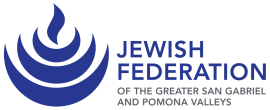In the mid-’90s, I remember that there was a buzz around the idea of “Jewish continuity.” The idea that everything Jewish organizations do should be focused on the idea of Jewish survival. Unfortunately, this concept was too big… too esoteric… too hard to grasp, let alone understand by most of the Jewish world. If Jewish leaders had really wanted to drive the point home, they should have developed a strong, robust, and complete marketing and public relations campaign, which, sadly, was not done. Or at least not done until PJ Library and JewBelong came around.
I bring this up because over the last several months, I have been thinking a lot about the direction of the Jewish world, and in particular, our local Jewish community. In a previous column, I shared the ten challenges currently facing American Jewry as presented by Dr. Steven Windmueller, the Rabbi Alfred Gottschalk Emeritus Professor at Hebrew Union College. It was the basis for a meeting I held last month with our community’s clergy to discuss ways to not only better engage with the Jews living in our area, but also figure out ways that our organizations need to adapt and change to become more relevant.
March 1 marks the start of my 18th year working at the Jewish Federation. During these many years, I have strived to create multiple entry points for people to find their way in and connect with the local Jewish community. It was my belief then, and still is to this day, that for so many, making that initial step to participate in a Jewish activity, attend a service, enroll their child in Jewish summer camp, or a myriad of other experiences can be a huge accomplishment. Whether they have had bad experiences in their past and have carried that baggage forward, feel that they don’t know enough about Judaism, Jewish customs or rituals, or any number of other reasons, the fact that they have decided to participate is a big deal and we should do everything within our power to acknowledge, appreciate and value it.
Rather than understand where they are coming from, or, more specifically, what they are looking for, we tend to push our ideas of what we feel they need to do. This has got to stop and the American Jewish community can learn a lot by taking the time to recognize and listen to what they are trying to tell us. Thankfully this information is available if we would be willing to analyze, accept it and learn from it. Case in point is the data from the Pew Research Center’s American Jews in 2020 survey and others like it. This survey showed that while synagogue affiliation continues to decline, Jewish affiliation is on the rise, along with a shift as to how people are now finding their Jewish connection and what they are looking for from Jewish experiences.
Our community organizations need to continue to evolve, adapt and adopt a central social work tenant of “meeting the client where they are at.” It is why programs like PJ Library and JewBelong are so popular and successful. They allow people to engage Jewishly at their own pace and in their own way with no expectations, to help people avoid the feeling of being “Jewbarassed.” (I encourage you to look it up to see what it means.) And, when they are ready, explore the richness and beauty of what being a part of the Jewish community has to offer.
It is going to take time and patience, but it will be well worth it.

0Comments
Add CommentPlease login to leave a comment